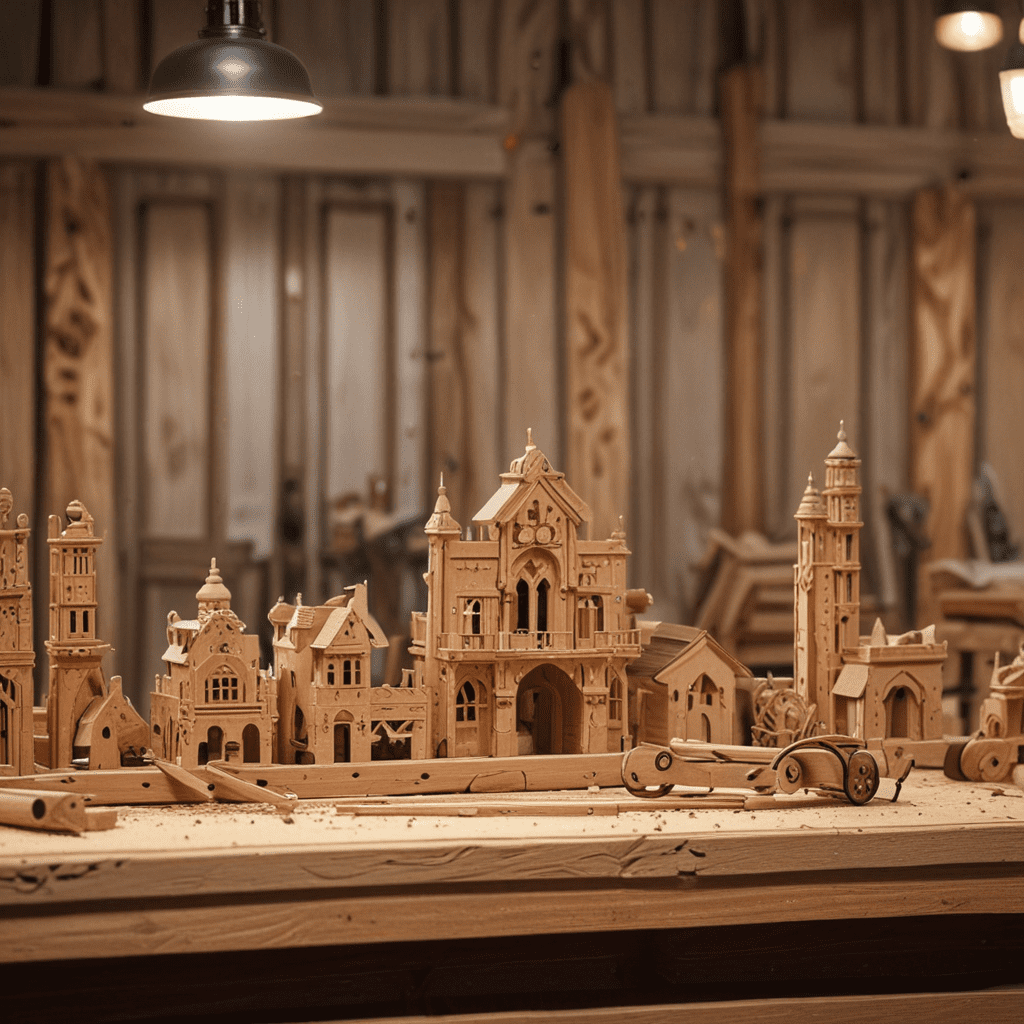
Bahrain's Traditional Woodwork and Carpentry Techniques
Bahrain's rich cultural heritage is reflected in its traditional woodwork and carpentry techniques, which have been passed down through generations. These time-honored crafts have played a pivotal role in shaping the country's architectural and decorative landscapes.
1. Historical Background
The origins of Bahraini woodwork can be traced back to ancient seafaring traditions. Bahrain's strategic location at the crossroads of major trade routes allowed artisans to learn from diverse cultures, incorporating influences from Arabia, Persia, and India into their own techniques.
2. Raw Materials and Tools
Bahraini woodworkers primarily use local hardwoods, such as acacia and sidr, which are known for their durability and resistance to decay. Teak and rosewood are also imported for more intricate carvings and furniture-making. Traditional tools include hand-held saws, chisels, and adzes, each designed for specific tasks.
3. Traditional Designs and Patterns
Bahraini woodwork is characterized by intricate geometric patterns, inspired by Islamic art and architecture. These patterns often incorporate Arabic calligraphy, floral motifs, and abstract designs. Traditional woodwork adorns doors, windows, ceilings, and furniture, adding a touch of elegance and artistry to everyday life.
6. Decorative Elements: Inlays, Marquetry, and Gilding
Bahraini woodwork often incorporates decorative elements such as inlays, marquetry, and gilding. Inlays involve embedding different materials, such as ivory, bone, or metal, into the wood to create intricate designs. Marquetry is a technique where pieces of different colored wood are used to form elaborate patterns. Gilding adds a touch of opulence to woodwork by applying thin layers of gold to enhance the visual appeal.
7. Cultural Significance and Social Status
Woodwork and carpentry have played a significant role in Bahraini culture, reflecting the skills and artistry of the craftsmen. Intricately carved doors and windows signify the wealth and social status of a family, while custom-made furniture showcases the pride and tradition of the household. Woodwork also holds cultural significance in traditional ceremonies, such as weddings and religious festivals.
8. Apprenticeship and Transmission of Skills
The transmission of woodworking skills in Bahrain has traditionally been through apprenticeship. Young apprentices learn from experienced masters, acquiring knowledge and techniques that have been passed down for generations. Apprenticeships offer practical experience, fostering the preservation and传承文化遗产.
9. Contemporary Adaptations and Innovations
While traditional techniques remain highly valued, contemporary adaptations and innovations have emerged in Bahraini woodwork. Modern designs incorporate abstract and geometric patterns, combining traditional craftsmanship with current aesthetics. New materials, such as epoxy resin and metallic finishes, are also being integrated to create unique and eye-catching pieces.
10. Conservation and Preservation Efforts
Recognizing the importance of preserving traditional woodwork, Bahrain has undertaken conservation efforts to protect and maintain historic buildings and artifacts. Artisans collaborate with conservators to restore and repair damaged woodwork, ensuring the continuity of these cultural treasures for future generations.
Frequently Asked Questions
Q: What is the most common type of wood used in Bahraini woodwork?
A: Acacia and sidr hardwoods are primarily used for their durability and resistance to decay.
Q: How are traditional Bahraini woodwork designs influenced?
A: Designs are inspired by Islamic art and architecture, incorporating Arabic calligraphy, floral motifs, and geometric patterns.
Q: What are some notable decorative techniques used in Bahraini woodwork?
A: Inlays, marquetry, and gilding add intricate details and enhance the visual appeal of woodwork.
Q: How is traditional woodworking knowledge passed down in Bahrain?
A: Skills are transmitted through apprenticeships, where young artisans learn from experienced masters.
Q: Are there any modern adaptations in Bahraini woodwork?
A: Contemporary designs incorporate abstract patterns and new materials, combining traditional craftsmanship with current aesthetics.


